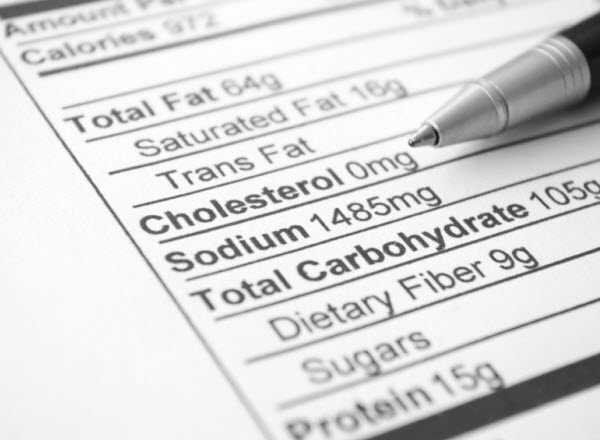Due to the ever-growing epidemic of obesity, leading to coronary heart disease in the United States, fat intake has been looked at as one of the primary causal contributors. However, despite continued efforts to stem the rising consumption of fats in the American diet, the rates of obesity in the United States continue to rise. Research now indicates that the type of fat consumed is more important than the total amount of fat intake. While trans- and saturated fats increase the risk of coronary heart disease, unsaturated fats appear to be cardio-protective.
- Trans-Fats: While some appears naturally in foods, most trans-fats are a result of industrial processing of unsaturated fats, also known as “hydrogenation”. Consumption of trans-fats is associated with an increase in LDL (“bad cholesterol”) and a decrease in HDL (“good cholesterol”). It may also interfere with the body’s metabolism of omega-3 polyunsaturated fats, which are important in heart health and pregnancy. Overall, these fats increase the risk of coronary heart disease and should be avoided, if possible.
- Saturated Fats: Derived primarily from animal products (e.g., dairy, red meat), consumption of saturated fats increases total blood cholesterol levels (including LDL and HDL), leading to an increased risk of coronary heart disease. Its consumption should be minimized.
- Monounsaturated Fats: Replacing trans-fats with monounsaturated fats may lower LDL while maintaining HDL levels. Found in vegetables, animal products and partially hydrogenated (partially processed) fats, monounsaturated fat consumption is also associated with a decrease in oxidation of LDL in the blood, thought to be a key step in atherosclerosis (development of fatty plaques in blood vessels). Of note, while it is thought that vegetable sources of monounsaturated fats are heart-protective, it is unknown if the same benefits can be gained from animal sources.
- Polyunsaturated Fats: Abundant in various vegetables, seeds/nuts and fatty fish, the omega-6 and omega-3 family of fats are essential nutrients for humans. Both are currently thought of as heart-protective; however, the evidence for omega-3 fats is much stronger. Of note, some studies replacing saturated fats with omega-6 fats show a possible increase in heart disease, and increased omega-6 consumption has been linked to cancers in animal studies. Further test are needed to fully understand the health effects of omega-6 fats.
The current US dietary guidelines recommend that for an adult, 20% to 35% of calories should come from fat. Furthermore, trans-fat consumption should be kept as low as possible, ideally being replaced by monounsaturated and polyunsaturated fats.
However, the key to a healthy diet isn’t one with low to no fat, or even one devoid of “unhealthy” fats. It is important to remember that there are also many other non-fat components of a diet that can affect health (e.g., carbohydrates, proteins, antioxidants, folate, and other vitamins/minerals). Ultimately, a healthy diet is one with all the essential nutritional components in good balance.
Sources :
U.S. Department of Agriculture and U.S. Department of Health and Human Services. Dietary Guidelines for Americans 2010. 7th Edition, Washington, DC: U.S. Government Printing Office, December 2010. http://www.cnpp.usda.gov/DGAs2010-PolicyDocument.htm



